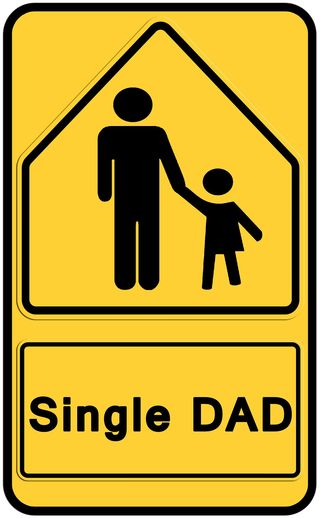Divorce
Shared Physical Custody After Divorce: "Fair" to Children?
Everyone likes shared custody, but there are emotional drawbacks for children.
Posted August 26, 2019 Reviewed by Davia Sills

Joint custody with shared physical possession of children is in vogue in the United States and usually preferred to other custody arrangements. Children move back and forth between two households and relocate to each parent every few days, weeks, months, or semesters.
Joint physical possession is different than joint legal custody in which each parent has input into decisions affecting the child, regardless of the amount of time the child spends living with each parent.
Most of the arrangements call for a 50-50 split of time for a child with each parent. Logistically, this means children have two homes, bedrooms, sets of belongings, schedules, and household routines to adjust to every few days or weeks. This becomes a division of a child’s time with each parent and parent’s time with each child.
Often I ask divorcing parents what their lives would be like as adults if they had to relocate to another household regularly. Most say it would be a nightmare. Yet, they want it for their children. As a psychiatrist, I must always ask the question: Why?
In this blog post, I answer the question of why shared custody is so desired and also explore what the difficult task is psychologically for children living in two households.
And, in a later post, I’ll discuss what children learn from joint physical custody, what their emotional fallout is, and what post-divorce living arrangement best suits the psychological needs of children.
Why Do People Like Shared Custody?
In the midst of divorce turmoil, parents’ anxieties are high due to major changes in their status quo. Parents become sticklers for “fairness,” defined as a time component of exposure to or access to their children. Commonly, one or both parents are content with a shared physical custody arrangement.
Courts also love these arrangements, citing legal fairness in children splitting parental “time” 50-50. Judges also like these custody and living arrangements, because they may mean less frequent appearances in court after divorce and lessen judicial anxieties over how to make custody and living arrangement decisions.
But courts have little know-how of children’s emotional needs and development. What about the children? How “fair” psychologically is shared physical custody for them? What do parents and court systems misunderstand or fail to consider?
After 40 years of psychotherapy practice with these families and over 20 years performing custody and visitation evaluations for courts, I have a few observations.
Equal Time but Not Exposure to Equal Parenting
One disconnect is that shared physical custody only represents a division of time spent with each parent, not exposure to equally helpful parenting. Parents relate differently to each child, irrespective of their sex, or the children's sexes. Children are not exposed to equivalent parenting from one household to another.
Attachment and parenting differences are not taken into account unless there is a legal showing of abuse or neglect. I find children always attach differently to Mom and Dad. This is not dependent on parents’ sexes. The attachment styles depend on each parent’s personality.
I find most often one parent cares better for the child’s emotional and physical needs in developmentally appropriate ways. The other parent often uses the child to fulfill his or her emotional needs in a role-reversal or parentified fashion, to a greater or lesser degree depending upon the parent.

The Difficult Task for Children
When parents live together pre-divorce, children learn or are emotionally conditioned—the latter a concept explained in my book, Living on Automatic—to relate differently to each parent because of the different way each parent interacts with them.
In a divorce, each child is on his own with each parent and must deal solo with each parent. When this is the parent that leans on the child emotionally, this becomes a too-difficult job for children.
Adjusting to two different parent styles when parents live apart is not only arduous for children but may be impossible. When parents were married, I discovered the more caregiving parent often buffered the other parent’s style of wanting emotional support from the child. During a marriage, one parent usually ran and organized the children’s schedules.
With a divorce, children begin to realize how each parent operates alone. Things look very different than when everyone was together in one household.
One parent may cook meals, do the laundry, and get children to school on time. The other parent may only buy fast food, let dirty clothes pile up, make the children do the laundry, or be routinely late in arriving at school.
Most children tell me they find a more disorganized, erratic lifestyle with one parent and a more organized, predictable experience with the other parent. Children are thrown back and forth between these two extremes with each relocation.
Case Example
Henry, 8 years old, has lived with split physical custody for the past two years. He switches households every week. When he arrives at Dad’s house, he is irritable, cries easily, and acts like a younger child, rolling on the floor and whining for several hours.
He is unable to do his routine chores of taking a bath, making his bed, and clearing the table. His neck is grey with grime. He says he hasn’t bathed all week at Mom’s. He is smelly and wears dirty clothes.

He alternately wants to sit on Dad’s lap and be held by Dad, or he roams around the living room, spewing angry talk of how he is “no good.” He wakes up in the middle of the night, crying and crawls into bed with Dad.
As the week goes on, Henry improves with Dad’s support of holding him, giving emotional comfort, and bathing him. Henry gradually returns to his usual 8-year-old self.
As time draws near to return to his mother’s house, he begins to tell Dad he doesn’t want to go and asks if he can stay longer with Dad. He cries and pleads.
When Mom arrives, Henry puts on a stoic face and quietly goes with her, asking her how she is. For at least a year, Henry’s father has discussed his concerns with Henry’s mother about her care of him. Nothing changes.
Dad has gone back to the Court for relief for Henry’s distress. The Court tells him that shared physical custody is the standard decision for all families and that he must work the situation out with Henry’s mother.
Henry's psychological needs are not being met for a childhood in which he is cared for adequately by both parents. Unfortunately, this scenario happens to many children.




